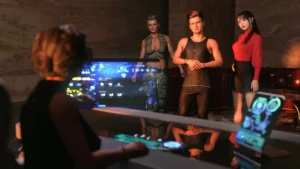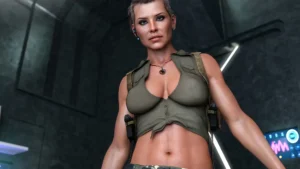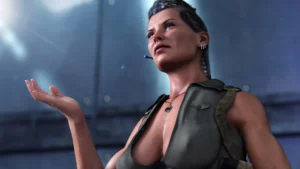
How to Fix the Future
Play How to Fix the Future
How to Fix the Future review
Master Gameplay, Story, and Strategies in How to Fix the Future
How to Fix the Future is an immersive sci-fi visual novel game that combines deep storytelling with strategic gameplay. Centered on a young man caught between an ordinary life and a destiny shaped by mysterious agents from the future, this game challenges players to navigate complex relationships and impactful choices. In this guide, we’ll explore everything from the game’s core mechanics to character development and practical tips to help you master How to Fix the Future and enjoy its rich narrative and gameplay.
Understanding How to Fix the Future: Story and Gameplay
Ever find yourself stuck in a boring office job, staring at the spreadsheet from hell and dreaming of something more? 🤔 I sure have. That’s why the first time I booted up How to Fix the Future, it felt like the game was reading my mind. This isn’t just another sci-fi romp; it’s a deeply personal journey that masterfully blends the painfully mundane with the thrillingly extraordinary. At its heart, the How to Fix the Future game story is about a protagonist living a double life: by day, you’re a cog in the corporate machine, and by night, you’re a secret agent trying to prevent a global catastrophe. This brilliant setup is the engine for one of the most engaging interactive storytelling games I’ve ever experienced.
Let’s dive in and unravel what makes this game’s fusion of narrative and play so special. 🚀
What is How to Fix the Future About?
The How to Fix the Future narrative kicks off with a discovery that changes everything. Your character, whom you name and shape, accidentally uncovers a terrifying truth: a shadowy organization is actively working to collapse the global timeline for its own gain. 😱 The catch? You’re the only one who knows about it, and you have to stop them without alerting anyone to your activities.
This is where the game’s core concept shines. You must meticulously balance your dual life. By day, you have to show up to your soul-crushing job, hit your deadlines, and manage office politics to maintain your cover and earn a paycheck. By night, you hack into secure networks, gather intelligence, and make universe-altering decisions. I remember one in-game Tuesday where I spent my lunch break decrypting a villain’s manifesto and my afternoon in a pointless meeting about synergizing deliverables. The cognitive whiplash is real, and it’s absolutely intentional. The How to Fix the Future game story uses this contrast to make your secret missions feel even more vital and electrifying.
The emotional weight of this How to Fix the Future narrative comes from the stakes. It’s not just about saving the world in a abstract sense; it’s about protecting the people in your immediate circle—your quirky roommate, your demanding boss, your friends—who have no idea the sword of Damocles hanging over them. This personal connection elevates it beyond a simple save-the-world plot and makes you genuinely care about the outcome of your actions.
Core Gameplay Mechanics Explained
The magic of this game lies in how its systems are woven directly into the plot. The How to Fix the Future gameplay mechanics aren’t just a list of features; they are the tools of your trade and the consequences of your choices. Let’s break down the big three.
First, and most iconic, is Timeline Manipulation 🕰️. This isn’t just a fancy “rewind” button. As a timeline manipulation game, How to Fix the Future gives you the ability to see the cascading effects of your decisions. Early on, I had to choose between stopping an assassination or preventing a data breach. I chose the former, only to find out later that the breached data led to my best friend being laid off. The game allowed me to—at a great cost to my character’s energy and sanity—peek into that alternate timeline and understand the full consequence. You can’t just fix everything; you have to choose which future is least broken.
Second, we have Relationship Management. Every character you meet, from your barista to the head of security you’re trying to befriend, has a relationship meter. This isn’t just for getting better dialogue options. These relationships unlock crucial resources, safe houses, and information. Ignoring your social links to focus solely on spy work is a surefire way to fail. It’s a constant, rewarding juggling act.
Finally, there’s Skill Fusion. Your character develops skills from both halves of their life. A boring seminar on project management might unlock the “Efficient Planning” skill, which you can then fuse with a hacking skill you learned at night to create “Rapid System Override.” This system beautifully represents how your two lives aren’t separate; they feed into each other and make you a more effective hero.
The table below summarizes how these core systems directly impact your journey through the story:
| Gameplay Mechanic | How It Works | Impact on the Story |
|---|---|---|
| Timeline Manipulation | Allows you to preview and sometimes alter the consequences of major decisions. | Creates a deeply personal and consequential How to Fix the Future narrative where your choices truly matter. |
| Relationship Management | Building trust with a network of contacts through conversations and favors. | Directly opens or closes narrative branches and determines who you can save in the final act. |
| Skill Fusion | Combining abilities learned from your day job and secret missions. | Makes the dual life game mechanics feel integrated and essential to character progression. |
Pro Tip: Don’t neglect your “useless” office skills! That “Advanced Spreadsheeting” ability might seem lame, but when fused with “Cryptography,” it becomes a game-changer for cracking financial records. 💡
Key Characters and Your Journey
The world of How to Fix the Future is populated with a cast that feels refreshingly human. The How to Fix the Future characters are more than just quest givers; they are the emotional anchors of your mission. Getting to know them is a core part of the experience in this standout among interactive storytelling games.
Let’s meet the key players:
-
Alex Chen (Your Character): You are the blank slate, but the game does a fantastic job of giving you a defined personality through your reactions to this insane situation. Your internal monologue is a constant companion, filled with equal parts dread, determination, and sarcastic commentary about corporate jargon. 😄
-
Maya, The Roommate: Your bubbly, aspiring-artist roommate who is completely oblivious to your double life. She’ll complain about her creative block and leave messy paintings all over the apartment. Protecting her innocence becomes a powerful motivator. Investing time in her storyline doesn’t give you spy perks, but it gives you a reason to fight—a reminder of the normal world you’re trying to preserve.
-
Director Sterling, The Handler: Your gruff, mysterious contact within the shadowy resistance. She’s the one who gives you your nightly missions. While she seems all business, I found that bringing her coffee during a late-night briefing (a leftover from my day job) slowly opened up a more vulnerable side of her, revealing crucial backstory about the enemy.
-
Ben “The Kernel,” The Hacker: A paranoid tech genius who operates from a hidden server farm. He’s your source for illegal software and intel, but he demands favors in return, often putting you in morally grey areas. His loyalty is conditional, and managing your relationship with him is critical to accessing the best tech.
-
Mr. Evans, The Boss: The epitome of corporate middle-management. He’s not a villain, just hilariously and frustratingly obsessed with TPS reports and team-building exercises. Navigating his demands without getting fired is a mini-game in itself, and your success or failure here directly impacts your resources for your night missions.
Getting to know these How to Fix the Future characters is not optional. Your connections with them are the bedrock upon which the entire How to Fix the Future game story is built. They are the “why” behind all the “what” you are doing.
Ultimately, How to Fix the Future succeeds because it makes you feel the weight of its world. The genius of its dual life game mechanics and the strength of its How to Fix the Future narrative create a powerful, emotional loop where every choice, both big and small, resonates. It’s a game that stays with you long after you’ve put down the controller, making you look at your own daily grind and wonder what secret heroes might be hiding in the cubicle next to you. ✨
How to Fix the Future offers a unique blend of sci-fi storytelling and strategic gameplay that keeps players engaged through meaningful choices and rich character interactions. By understanding its core mechanics and narrative depth, players can fully immerse themselves in the game’s world and enjoy a rewarding experience. Whether you’re new or returning, applying the strategies and insights shared will help you navigate challenges and shape your own version of the future. Dive in and start your adventure today!




















